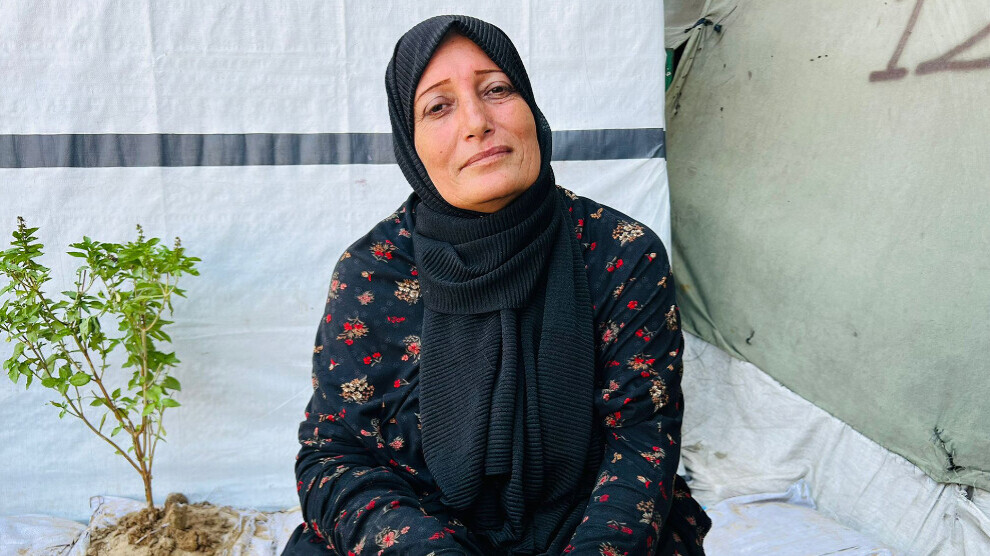Stories Ease the Weight of War in Gaza
The grandmothers' stories are becoming a source of psychological support for children in Gaza. These stories not only provide psychological support but also play a role in preserving cultural heritage.

RAFIF ESLEEM
Gaza – Folk stories, preserved in the memories of grandmothers and in the collective consciousness, were once the main source of entertainment and learning for mothers in the past. However, with technological developments, the spread of the internet, and the introduction of smartphones into daily life, the role of these stories gradually diminished. With the Gaza war, as smart devices became unusable and internet access was largely restricted, these traditional stories resurfaced. Today, especially in an environment of crisis and war, these oral narratives have become not only a way to pass time but also a powerful source of psychological support.
An’am Al-Tawil, one of the women, recalls listening to countless Palestinian folk stories from her mother and grandmother during her childhood. Yet, as years passed, only a few remained vividly alive in her memory. Born in the 1970s, An’am Al-Tawil witnessed different periods of the city, intertwined with war, hope, and resistance. Each period was reflected in the folk stories, for these tales were shaped by environmental conditions. Thus, the content, language, characters, and style of narration evolved over time, in line with the social and cultural structure of the era.
“Stories are a way of survival”
An’am Al-Tawil recalls her memories of the past as follows:
“In the old days, folk tales were told to persuade children to stay in bed at night. Little Red Riding Hood and the Wolf, The Industrious Hen, The Cat and the Mouse, Juha, and many more… But sometimes things got difficult, and when the children stubbornly refused to sleep, the storyteller would have to invent a frightening character that would force them to close their eyes and drift into deep sleep. In the past, even without smart devices, life was not as unsettling as it is today. The sense of calm and stability that prevailed back then was more valuable than anything else in the world. Today, children are deprived of that feeling. Stories are now told at moments when a child silently wonders, ‘Will this missile fall on us?’ or ‘Why is the drone firing at the tent?’ Stories have become not only a passage into sleep, but a way of survival in the shadow of fear and chaos.”
“Stories are interrupted by anxiety”
An’am Al-Tawil says that during the Gaza War, folk stories turned into a painful memory for her. One night, while telling her grandchild a story, a bullet pierced the fabric of the tent and hit the child in the eye. The injured child now needs to be sent abroad for a corneal transplant. Despite this tragic experience, An’am Al-Tawil noticed that folk stories occasionally had a soothing effect on her grandchildren. She explains: “Sometimes the children listen to the story until the end and even ask curiously about its details. But at other times, they interrupt the story anxiously with questions like, ‘Will we be sent to the southern Gaza Strip?’, “If we stay here, will the soldiers kill us?’, ‘If we go south, will they let us live in peace, or will tanks and drones chase us?”
An’am Al-Tawil says children have now begun to create their own folk stories, especially since they do not have a hero to protect them, they invent tales in which they themselves become the heroes. Listening to the stories created by children while playing, she often realizes they carry traces of a life trapped in the middle of war. “Once, I heard the children telling a story about being besieged inside Al-Shifa Hospital, the building burning, and then being forced to march barefoot into exile surrounded by tanks on both sides of the road,” she says.
Stories carry messages
When children do not request a specific story, An’am Al-Tawil prefers to tell them tales that instill values and moral lessons. For example, in the story of the hen, she tells them that if they don’t store food for the winter, they will go hungry; if they don’t gather firewood, they cannot bake flour; if they miss the water truck on time, they will be left without water. The children grasp these messages and try to apply them in their daily lives.
An’am Al-Tawil also calls on mothers not to abandon their children to the smell of death and displacement rising from every tent and house in Gaza City. Instead, she urges them to encourage their children to play with simple toys around them or to keep their minds busy with stories—especially for girls, who tend to show greater interest in stories and retain their details in memory.
She emphasizes that a child’s ability to follow a story depeight the roles of the characters. According to An’am Al-Tawil, how the story is told is crucial in capturing the children’s attention: “This becomes especially effective when the conditions experienced by the characters resemble the child’s own life. In such cases, every child feels as though the story is being told only to them.” Stressing that folk stories are part of collective memory and cultural heritage, A’nam Al-Tawil concludes with these words: “No matter the circumstances, these narratives must be preserved and passed down to future generations.”
